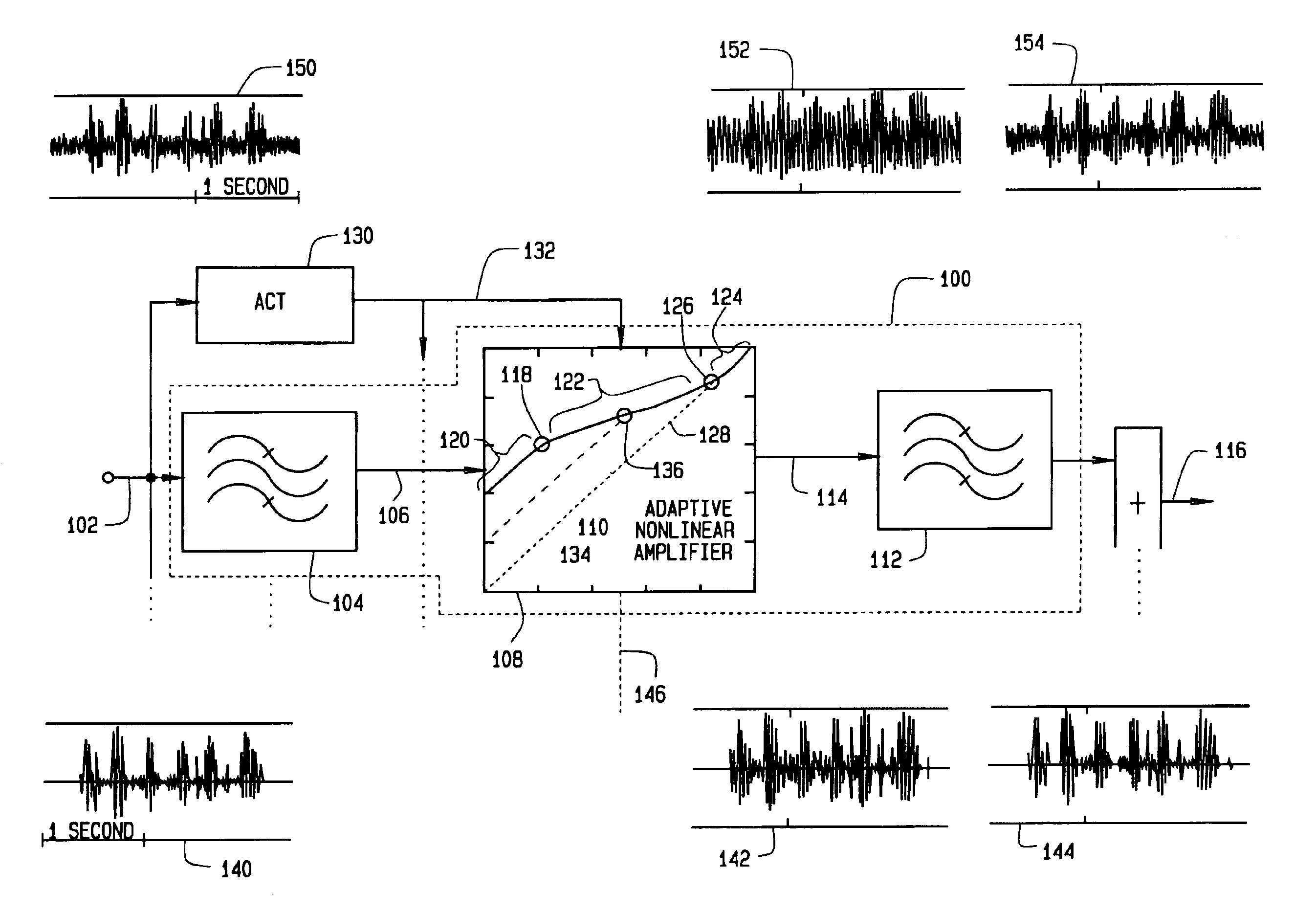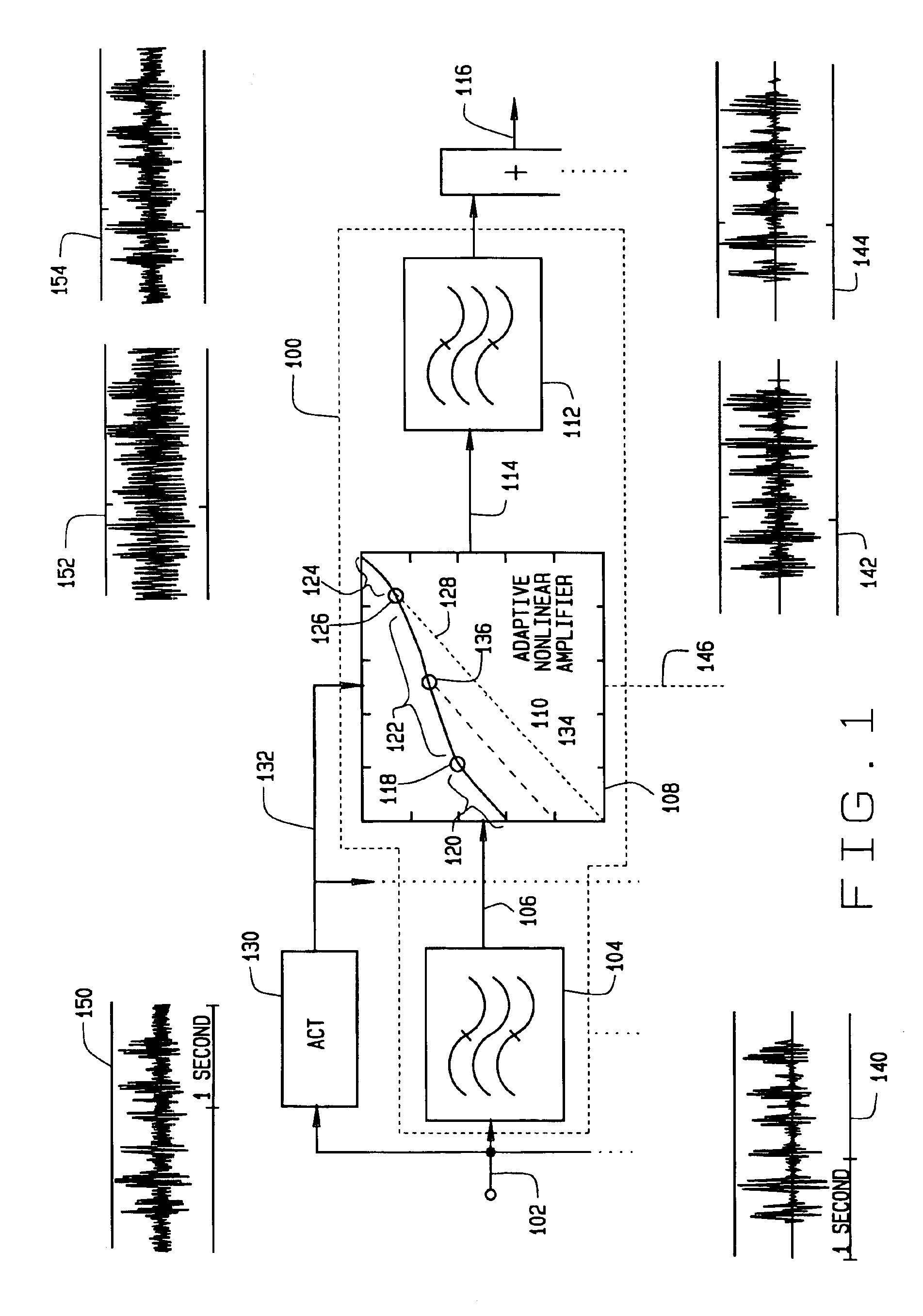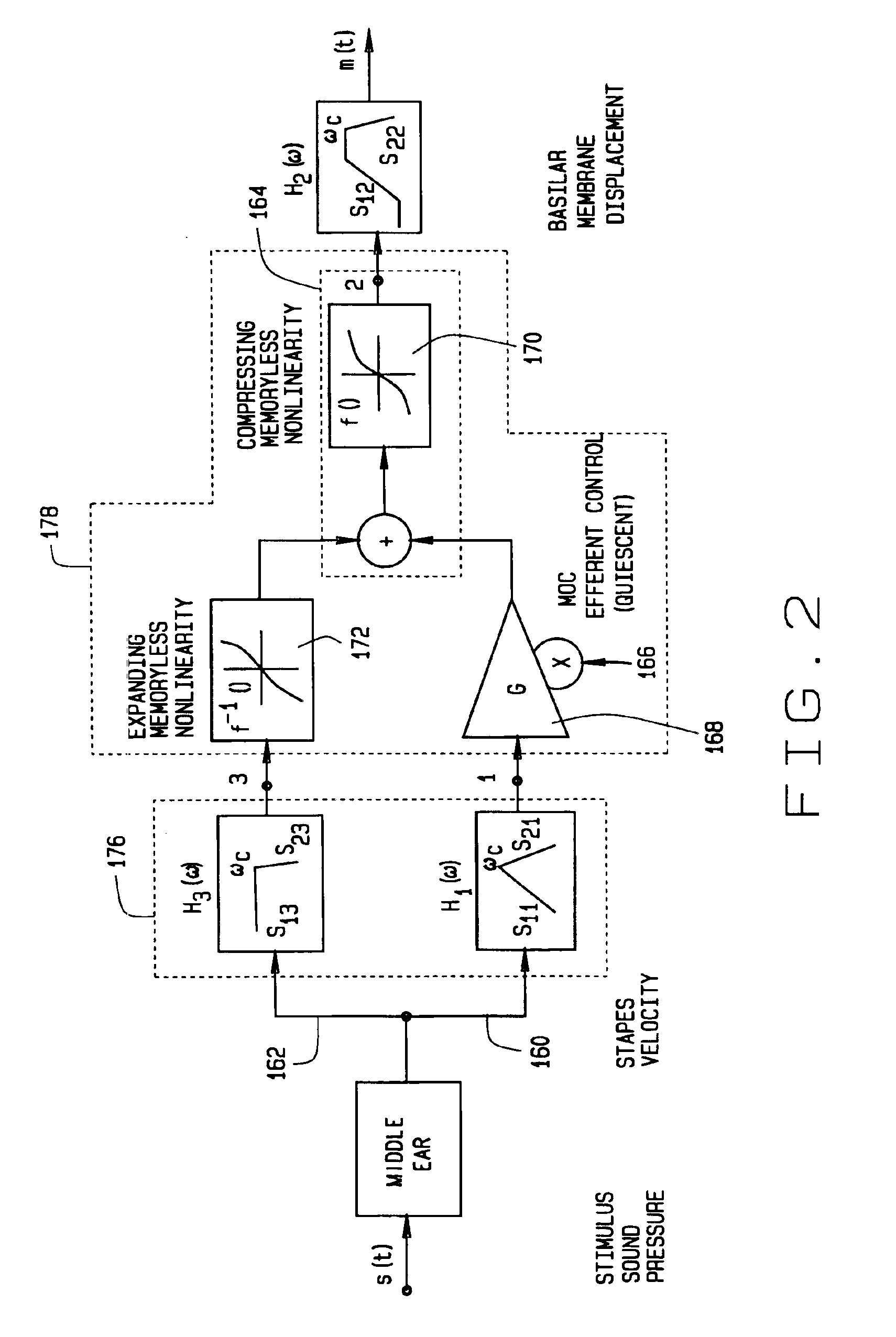Hearing aids based on models of cochlear compression using adaptive compression thresholds
a threshold and cochlear compression technology, applied in the field of electroacoustic system correction and clinical testing of hearing impairment, can solve the problems of less than 60% of hearing aid owners being satisfied with their hearing aids, less than 2 million sold annually, and inability to adjust to the sound intensity of intense sounds, etc., to achieve the effect of improving comfort, improving intelligibility of the resultant amplified sound signal, and improving the hearing comfort of users
- Summary
- Abstract
- Description
- Claims
- Application Information
AI Technical Summary
Benefits of technology
Problems solved by technology
Method used
Image
Examples
Embodiment Construction
[0062]As used herein, a “hearing amplification device” refers to a hearing aid, a hearing aid fitting device (i.e., a testing device used to select appropriate characteristics of a hearing aid for hearing impaired individual), or a hearing diagnostic device.
[0063]FIG. 1 shows a simplified block diagram of a preferred embodiment of a cochlear-based paradigm for hearing aid amplification in accordance with the present invention. One channel 100 is illustrated in FIG. 1, although it is indicated by the dashed lines that a hearing aid or diagnostic device may preferably be provided with a plurality of channels, each acting on different audio frequency ranges. Usually, the audio frequency ranges will comprise contiguous bands covering the useful audio range, but this may depend upon the gain correction required. Preferred analog and digital implementations are discussed in conjunction with other figures presented herewith, but FIG. 1 conveniently serves to explain the general principles ...
PUM
 Login to View More
Login to View More Abstract
Description
Claims
Application Information
 Login to View More
Login to View More - R&D
- Intellectual Property
- Life Sciences
- Materials
- Tech Scout
- Unparalleled Data Quality
- Higher Quality Content
- 60% Fewer Hallucinations
Browse by: Latest US Patents, China's latest patents, Technical Efficacy Thesaurus, Application Domain, Technology Topic, Popular Technical Reports.
© 2025 PatSnap. All rights reserved.Legal|Privacy policy|Modern Slavery Act Transparency Statement|Sitemap|About US| Contact US: help@patsnap.com



